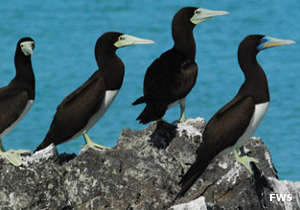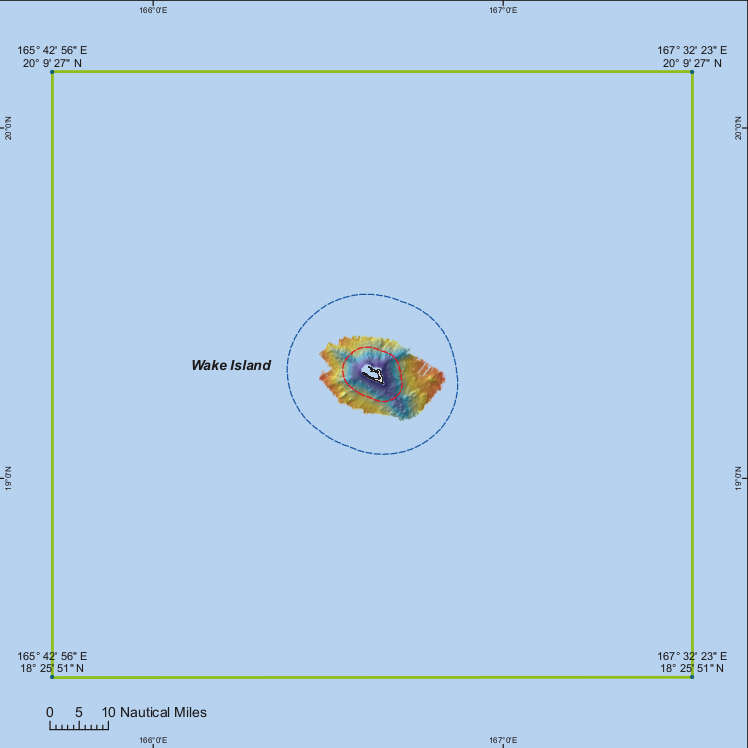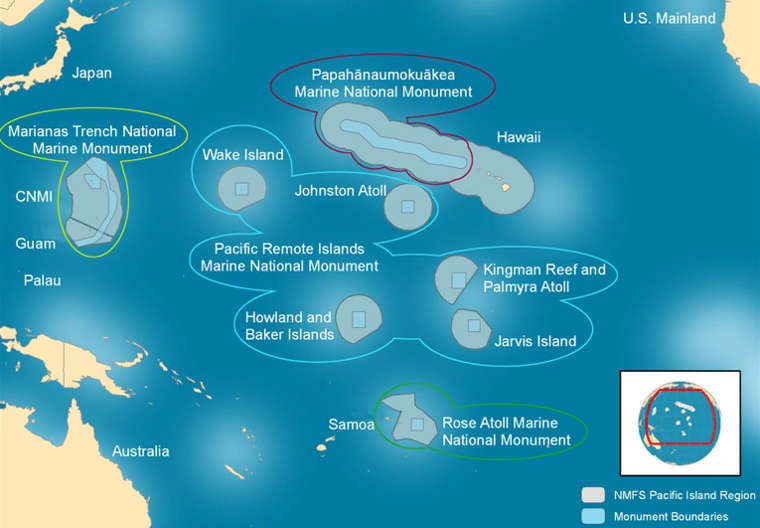Wake Atoll National Wildlife Refuge

Typical scene at Wake Atoll National Wildlife Refuge

The northernmost atoll on the Marshall Islands geological ridge, Wake Atoll is located about 2,138 nautical miles west of Honolulu. The atoll is actually a group of islands surrounding a central lagoon. The majority of the land mass is under the jurisdiction of the US Air Force as they maintain a 9,000-foot landing strip and a missile launch site on Wake. There are also miscellaneous artifacts from World War II on the islands. The National Wildlife Refuge is comprised of some 495,515 acres of submerged lands extending out to 12 nautical miles from the mean low tide shoreline.
Wake Atoll sits atop the summit of an ancient volcano with the central lagoon being in the crater of the volcano, the islands and reef being along the rim. The land mass now is a pile of ancient broken coral interspersed with coral boulders. Much of the surface is treed with an understory of thick, thorny tropical shrubs and grasses. Some of the trees reach 20 feet in height but there are none of the tall coconut palms found on many Pacific islands. The climate is tropical and dry with periodic storms in the winter months. The ambient sea temperature is typically above 80°F in the summer and fall. Typhoons have been known to strike the islands hard.
Wake Atoll was a bad place to be during World War II: after killing the American detainees and burying them in a mass grave in 1943, the Japanese were so hungry they wiped out the Wake Island Rail. More than 75 years later, the island has still not lost its perceived importance as a military base and mid-ocean airstrip.
About 100 species of coral have been found at Wake Atoll, along with more than 320 species of fish. There is also a resident population of spinner dolphins and green sea turtles can often be seen foraging among the seabeds. Observers have reported seeing 12 species of resident nesting seabirds and 6 species of migratory shorebirds. Wake also holds one of the only colonies of blackfooted albatrosses and Laysan albatrosses outside the Hawaiian archipelago.
When the Pacific Remote Islands Marine National Monument was established in 2009, Wake Atoll National Wildlife Refuge was included. Entry to the refuge is by permit only and permits are generally only granted to scientists and researchers. The land mass of the atoll is a military base and entry is similarly restricted.


Pacific Remote Islands Marine National Monument map